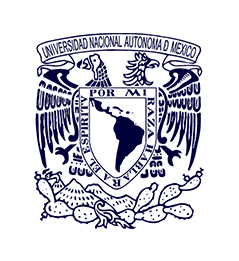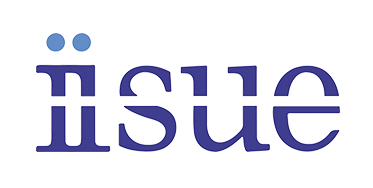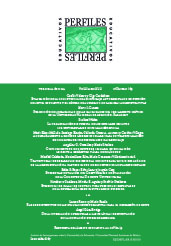Conocimientos de docentes de primaria en formación respecto a perímetro y área de polígonos
Contenido principal del artículo
Resumen
El objetivo de la investigación que reportamos es analizar el conocimiento que docentes de primaria en formación ponen en juego al resolver problemas de perímetro y área de polígonos. Para este propósito, elegimos doce tareas matemáticas: dos vinculadas a conocimientos factuales sobre perímetro y área, cuatro relativas a la comprensión de estos conceptos y seis enfocadas a explorar el uso de procedimientos rutinarios. Junto con el instrumento, diseñamos un código que permitiera realizar una categorización y análisis de las respuestas escritas de los participantes. En este estudio cualitativo participaron 39 estudiantes mexicanos de la licenciatura en Educación Primaria de una escuela Normal. Al analizar las respuestas de los sujetos de estudio identificamos dificultades para proporcionar definiciones formales de los conceptos de perímetro y área, además de que parecen estar más familiarizados con el uso de procedimientos de rutina que con la comprensión de los conceptos.
Descargas
Detalles del artículo
© 2025 Universidad Nacional Autónoma de México, Instituto de Investigaciones sobre la Universidad y la Educación. Este es un artículo Open Access bajo la licencia CC BY-NC-ND (http://creativecommons.org/licenses/by-nc-nd/4.0/).
Citas
Ball, Deborah Loewenger, Sarah Theule Lubienski y Denise Spangler Mewborn (2001), “Research on Teaching Mathematics: The unresolved problem of teachers’ mathematical knowledge”, en Virginia Richardson (coord.), Handbook of Research on Teaching, Washington, American Educational Research Association, pp. 433-456.
Ball, Deborah Loewenger, Mark Hoover Thames y Geoffrey Phelps (2008), “Content Knowledge for Teaching: What makes it special?”, Journal of Teacher Education, vol. 59, núm. 5, pp. 389-407.
Baturo, Annette y Rod Nason (1996), “Student Teachers’ Subject Matter Knowledge within the Domain of Area Measurement”, Educational Studies in Mathematics, vol. 31, núm. 3, pp. 235-268.
Baumert, Jürgen, Mareike Kunter, Werner Blum, Martin Brunner, Thamar Voss, Alexander Jordan, Uta Klusmann, Stefan Krauss, Michael Neubrand y Yi-Miau Tsai (2010), “Teachers’ Mathematical Knowledge, Cognitive Activation in the Classroom, and Student Progress”, American Educational Research Journal, vol. 47, núm. 1, pp. 133-180.
Berenson, Sarah, Ton Van Der Valk, Elizabeth Oldham, Ulla Runesson, Candida Queiroz Moreira y Harrie Broekman (1997), “An International Study to Investigate Prospective Teachers’ Content Knowledge of the Area Concept”, European Journal of Teacher Education, vol. 20, núm. 2, pp. 137-150.
Buschang, Rebecca E., Gregory K.W.K. Chung, Girlie C. Delacruz y Eva L. Baker (2012), Validating Measures of Algebra Teacher Subject Matter Knowledge and Pedagogical Content Knowledge (CRESST Report 820), Los Ángeles, University of California-National Center for Research on Evaluation, Standards, and Student Testing (CRESST).
D’Amore, Bruno y Martha Isabel Fandiño (2007), “Relaciones entre área y perímetro: convicciones de maestros y de estudiantes”, Revista Latinoamericana de Investigación en Matemática Educativa, vol. 10, núm. 1, pp. 39-68.
Fennema, Elizabeth y Megan Loef Franke (1992), “Teachers’ Knowledge and its Impact”, en Douglas A. Grouws (coord.), Handbook of Research on Mathematics Teaching and Learning, Nueva York, Macmillan, pp. 147-164.
Gobierno de México-Secretaría de Educación Pública (SEP) (2011), “Plan de Estudios 2011. Educación Básica”, en: https://www.gob.mx/cms/uploads/attachment/file/20177/Plan_de_Estudios_2011_f.pdf (consulta: 18 de marzo de 2019).
Gobierno de México-Secretaría de Educación Pública (SEP) (2012a), “Acuerdo número 649 por el que se establece el Plan de Estudios para la Formación de Maestros de Educación Primaria”, en: http://www.dgespe.sep.gob.mx/public/normatividad/acuerdos/acuerdo_649.pdf (consulta: 18 de marzo de 2019).
Gobierno de México-Secretaría de Educación Pública (SEP) (2012b), “Licenciatura en Educación Primaria. Programa del curso Geometría: su aprendizaje y enseñanza”, en: http://www.dgespe.sep.gob.mx/public/rc/programas/lepri/geometria_su_aprendizaje_y_ensenanza_lepri.pdf (consulta: 18 de marzo de 2019).
Hill, Heather C., Kristin Umland, Erica Litke y Laura R. Kapitula (2012), “Teacher Quality and Quality Teaching: Examining the relationship of a teacher assessment to practice”, American Journal of Education, vol. 118, núm. 4, pp. 489-519.
Hunt, Darwin P. (2003), “The Concept of Knowledge and How to Measure it”, Journal of Intellectual Capital, vol. 4, núm. 1, pp. 100-113.
Knapp, Andrea, Racheal Landers, Senfeng Liang y Vetrece Jefferson (2017), “We All as a Family are Graduating Tonight: A case for mathematical knowledge for parental involvement”, Educational Studies in Mathematics, vol. 95, núm. 1, pp. 79-95.
Livy, Sharyn, Tracey Muir y Nicole Maher (2012), “How do they Measure Up? Primary pre-service teachers’ mathematical knowledge of area and perimeter”, Mathematics Teacher Education and Development, vol. 14, núm. 2, pp. 91-112.
Ma, Liping (1999), Knowing and Teaching Elementary Mathematics. Teachers’ understanding of fundamental mathematics in China and the United States, Nueva York, Lawrence Erlbaum Associates.
Menon, Ramakrishnan (1998), “Preservice Teachers’ Understanding of Perimeter and Area”, School Science and Mathematics, vol. 98, núm. 7, pp. 361-368.
Mohr-Schroeder, Margaret, Robert N. Ronau, Susan Peters, Carl W. Lee y William S. Bush (2017), “Predicting Student Achievement Using Measures of Teachers’ Knowledge for Teaching Geometry”, Journal for Research in Mathematics Education, vol. 48, núm. 5, pp. 520-566.
Murphy, Carol (2012), “The Role of Subject Knowledge in Primary Prospective Teachers’ Approaches to Teaching the Topic of Area”, Journal of Mathematics Teacher Education, vol. 15, núm. 3, pp. 187-206.
Pepin, Birgit y Bettina Roesken-Winter (coords.) (2015), From Beliefs to Dynamic Affect Systems in Mathematics Education, Cham (Suiza), Springer.
Petrou, Marilena y Maria Goulding (2011), “Conceptualising Teachers’ Mathematical Knowledge in Teaching”, en Tim Rowland y Kenneth Ruthven (coords.), Mathematical Knowledge in Teaching, Países Bajos, Springer, pp. 9-25.
Rowland, Tim, Peter Huckstep y Anne Thwaites (2003), “The Knowledge Quartet”, en Julian Williams (coord.), Proceedings of the British Society for Research into Learning Mathematics, vol. 23, núm. 3, pp. 97-102.
Ruthven, Kenneth (2011), “Conceptualising Mathematical Knowledge in Teaching”, en Tim Rowland y Kenneth Ruthven (coords.), Mathematical Knowledge in Teaching, Dordrecht, Springer, pp. 83-96.
Schön, Donald A. (1983), The Reflective Practitioner: How professionals think in action, Nueva York, Basic Books.
Schwab, Joseph Jackson (1978), Science, Curriculum and Liberal Education, Chicago, University of Chicago Press.
Senk, Sharon L., Ray Peck, Kiri Bankov y Maria Teresa Tatto (2008), “Conceptualizing and Measuring Mathematical Knowledge for Teaching: Issues from TEDS-M, an IEA cross-national study”, ponencia presentada en el congreso “11th International Congress on Mathematical Education”, Monterrey, México, julio de 2008.
Shulman, Lee S. (1986), “Those Who Understand: Knowledge growth in teaching”, Educational Researcher, vol. 15, núm. 2, pp. 4-14.
Shulman, Lee S. (1987), “Knowledge and Teaching: Foundations of the new reform”, Harvard Educational Review, vol. 57, núm. 1, pp. 1-22.
Silverman, Jason y Patrick W. Thompson (2008), “Toward a Framework for the Development of Mathematical Knowledge for Teaching”, Journal of Mathematics Teacher Education, vol. 11, núm. 6, pp. 499-511.
Smith, Geoff, Leigh Wood, Mary Coupland, Brian Stephenson, Kathryn Crawford y Geoff Ball (1996), “Constructing Mathematical Examinations to Assess a Range of Knowledge and Skills”, International Journal of Mathematical Education in Science and Technology, vol. 27, núm. 1, pp. 65-77.
Tatto, Maria Teresa, John Schwille, Sharon L. Senk, Lawrence Ingvarson, Glen Rowley, Ray Peck, Kiril Bankov, Michael Rodriguez y Mark Reckase (2012), Policy, Practice and Readiness to Teach Primary and Secondary Mathematics in 17 Countries. Findings from the IEA Teacher Education and Development Study in Mathematics (TEDS-M), Amsterdam, IEA.
Thompson, Alba G. (1992), “Teachers’ Beliefs and Conceptions: A synthesis of the research”, en Douglas A. Grouws (coord.), Handbook of Research on Mathematics Teaching and Learning, Nueva York, Macmillan, pp. 127-146.
Tierney, Cornelia, Christina Boyd y Gary Davis (1990), “Prospective Primary Teachers’ Conceptions of Area”, en George Booker, Paul Cobb y Teresa de Mendecuti (coords.), Proceedings of the 14th Annual Conference of the International Group for the Psychology of Mathematics Education, México, International Group for the Psychology of Mathematics Education, pp. 307-315.
Yeo, Kai Kow Joseph (2008), “Teaching Area and Perimeter: Mathematics-pedagogical-content knowledge-in-action”, en Merrilyn Goos, Ray Brown y Katie Makar (coords.), Proceedings of the 31st Annual Conference of the Mathematics Education Research Group of Australasia, Brisbane, Mathematics Education Research Group of Australasia, pp. 621-627.
Yew, Wun Thiam, Sharifah Norul Akmar Syed Zamri y Lim Hooi Lian (2011), “Preservice Secondary School Mathematics Teachers’ Subject Matter Knowledge of Calculating Perimeter and Area”, Academic Research International, vol. 1, núm. 2, pp. 276-285.







